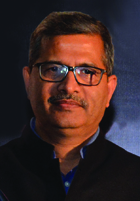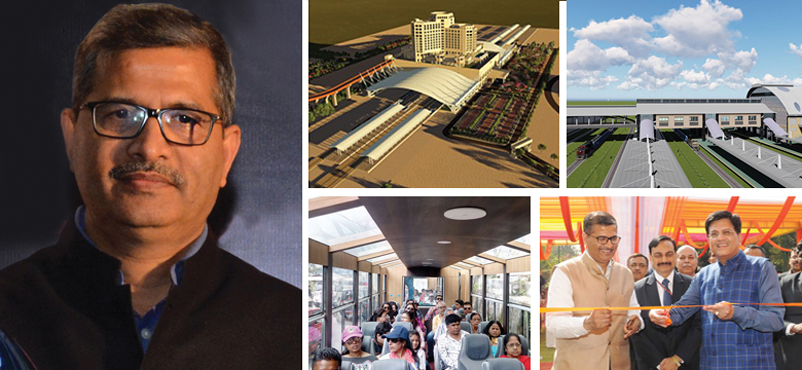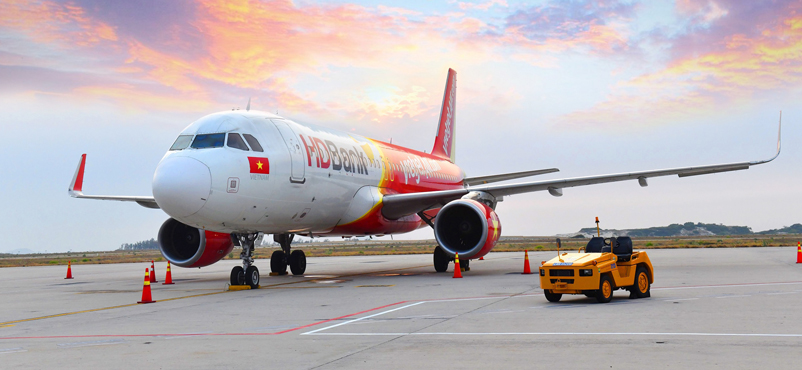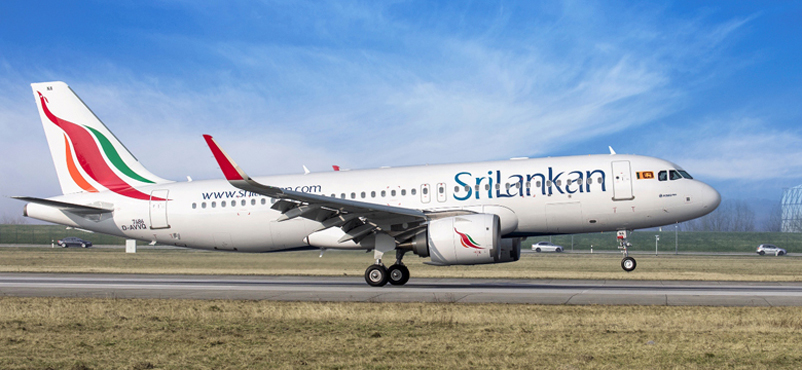Indian Railways was going all out on modernizing stations, upgrading existing tracks, besides weaving a vast network of dedicated freight tracks to speed up passenger trains and improve the passenger experience, mentioned Ashwani Lohani, Chairman, Railway Board. He also shared that the idea of mixed-use of stations to create a financially self-sustaining ecosystem was being pushed with fervor. Excerpts from an exclusive interaction at the Rail Bhavan.
What is being done by the railways that is impacting tourism?

Chairman, Railway Board
IRCTC is looking at issues related to tourism. IRCTC would be launching the Ramayana Circuit, covering India and Sri Lanka. Both air-conditioned and non-airconditioned bogies have been allocated for the same.
We were aware that the haulage charge of luxury tourist trains was extremely high. We have now slashed it down by 50 percent. This provides a lot of comfort to those who are in the business of running luxury tourist trains.
There were issues around them being sustainable products.
The issue involving their sustainability has been addressed. Now it depends on them to market it properly, or they can increase the occupancy by reducing the cost of tickets.
We are introducing new rakes for Buddhist special trains and the process of booking tickets for groups has been made simpler too. One had to contact the railways to book FTR coaches. Now we have delegated the authority to IRCTC. In yet another initiative, we have opened up saloons meant for railway officials for general booking. One can contact IRCTC and book a saloon. The IRCTC website has been completely revamped and made interesting.
What is being done for tourist trains such as the one on the Shimla-Kalka route?
The processes involving hill railways were very complicated. There were issues such as fixing of fares and charters. All the powers have now been delegated to the lowest levels and IRCTC has been told to promote hill railways.
What are some developments around general improvement of facilities at railway stations?
We are very aggressively undertaking the beautification and general improvement in facilities at railway stations. Over a hundred railway stations have been painted with local art, promoting the local culture. Madhubani and Patna railway stations are worth looking at. The work is on in full swing. The process of constructing lounges is also being expedited. Indian Railways Stations Development Corporation (IRSDC) has been created. The first two international standard railway stations will be in Gandhinagar in Gujarat and Habibganj in Bhopal. They will be ready by 31st December. In a first, we have created one more tier in the station – a massive air-conditioned people holding area. It would be on the top of many platforms at the ground level. We would be separating arrivals and departures.
We have permitted commercial spaces, hotels, restaurants, and housing flats at all stations. We want to develop stations without spending our resources. All the authority has been given to the newly formed corporation. We have 50-60 stations under mixed-use for now. It will be a flood after that. Every single railway station will be like this. It will be for a self-generating economy.
So monetizing assets would be high on the cards?
We have got a lot of land parcels with us. We are regularly tendering them out. We have an authority under us called the Rail Land Development Authority (RLDA). It has been mandated with the task of monetizing the land available with us. The authority can monetize land for shopping malls, housing complex, hotels, and others. That process is also going on at a fast pace. The aim is to improve the overall state of infrastructure.
Is there a target for how much monetization has to be done in a year? Is there a target for hotels?
There is no such target of how much land for hotels and others need to be leased. These attempts have been going on for a very long time but now for the first time, we have put processes in place. We have extended the lease period from 30 years to 99 years and have created the provision of multiple sub-leases. We have permitted housing, residential areas. Tenders for land parcels have been floated. We have also built a lot of multi-functional structures. A big success, however, is yet to come. We certainly have made the processes simpler for the first time, making it attractive for the investor too. That is the change.
What about modernizing railway tracks?
The railways suffered because over the years we kept on increasing the number of trains, without an eye on the infrastructure. We operate far too many trains in the north and east. It comes at the cost of the infrastructure. It had led to some accidents in the recent years. Therefore, we took a very strict stance of not compromising on safety. Running new trains is the difficult part because we are already chocked. But we replaced 43000 kilometres of old tracks last year, as against 2500 kilometres the year before.
The increase in capacity has also been much higher than we had internally assessed. The total capital outlay in the railways has almost doubled post-2014. So, we are looking at creating infrastructure, besides improving the existing one.
There were talks of running trains at higher speeds?
While we are committed to increasing the speed, because of mixed-use of tracks for operating all kinds of trains – goods, express, mail and others – our scope is limited.
Are new tracks being laid?
We are laying tracks afresh. For freight trains, we are laying a track from Ludhiana to Dankuni – a fast growing industrial town in West Bengal. Also, we are laying a track from Delhi to Mumbai. It will help us take the freight traffic off regular tracks and then the speed of passenger trains will go up. These will be in place by March 2020. As these two sectors are taken care of, we will move to other parts. So, we are quite gung-ho about improving the infrastructure.
Indian Railways is a mammoth organisation. There is no organisation like this anywhere in the world. It is the world’s biggest organisation. We have a workforce of almost 1.3 million and have around 30 Public Sector Undertakings (PSUs) under us. It is mind-boggling. It is a corporate organisation but also a government body. There were some issues around processes and culture. We have gone the whole hog to address these legacy issues and are undergoing a massive round of reforms on these fronts.
How will the industry gain from your experience in tourism and your association with the railways?
Tourism means to travel and travel in India means Indian railways. We can facilitate travel by creating new products. We have already shown our intent by reducing the haulage charge of luxury trains, boosting IRCTC and improving hill railways. IRCTC can come up with more packages. If it catches on, we can allocate more saloons. The interaction with the tourism fraternity is happening at the level of IRCTC.
How can the experience of hill railways be enhanced as a tourism product?
We will come up with special publicity material for hill railway products. New coaches are being introduced. It has been introduced on Darjeeling Himalayan railways, also in Ooty. We have put very good coaches in Shimla, along with rail buses. There are coaches with a balcony on offer.
Any comments on the tourism potential of India?
There is a lot of tourism potential because very little has happened yet. As the railways, we will do what we can. If states request for luxury trains, charters, or saloons, we will provide them the same. All premium trains such as Rajdhani Express, Shatabdi Express, and Duronto Express are being upgraded.



































